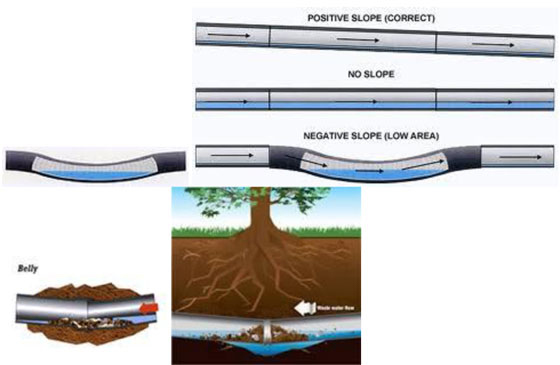If you suspect a major plumbing issue, such as a sewer line belly, stop and call Pipe Spy immediately. Sewer line bellies, or sags in the pipe, can cause significant issues like standing water, sediment buildup, and eventually blockages or backups. These occur due to factors like poor installation, improper soil bedding, and external forces such as tree roots or shifting soil.
Diagnosing a Sewer Line Belly
To accurately diagnose a sewer line belly, advanced video inspection technology is essential. This process involves pushing a camera through the pipe to provide a detailed view, allowing professionals to identify any sags or improper slopes that may be causing issues.
What Is a Belly in a Sewer Pipe?
Sewer line bellies are characterized by a sag or downward bent section of the pipe. A properly functioning sewer lateral typically has a slope that uses the force of gravity to facilitate flow. A bellied sewer line interferes with the normal flow of wastewater through the pipe, which causes water and sediment to collect in the bellied portion of the line.
What Causes a Belly in a Sewer Line?
Inadequate planning and subpar installation are most often the root causes of sewer line bellies. Professional installers understand that proper bedding compaction, high-quality pipe materials, and correct angle of slope are the most important factors in preventing the emergence of sewer line bellies. However, other factors like tree roots, earthquakes, sun, heat, rain, and extreme temperature fluctuations can also result in shifting soil that can cause bellies.
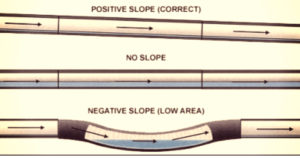
To prevent sewer line bellies, proper soil bedding is necessary during installation, which includes (large format gravel and sand). If the wrong materials are used for embedding, over time certain sections of the pipe will settle further into the ground, causing a belly to form.
A sewer line must also have the correct slope and grade in order for gravity to transport waste away from the home or building. Trenchless sewer line professionals use the most advanced tools available (including video cameras and locator wands) to ensure proper slope, thereby preventing bellies in the line and subsequent buildup of sediment.
In some cases, unstable ground can cause bellies. Even sewer lines that have been installed with the appropriate support in place may sag if the earth below begins to shift.
How Can You Diagnose a Sewer Line Belly?
Advanced video inspection technology is required to diagnose a sewer pipe belly. A professional sewer camera inspection includes pushing a video camera through the pipe, which provides a closeup view of the entire sewer lateral and allows your plumber to identify the issue. Incorrect slope issues can also be detected with a sewer line camera inspection.
What is the Difference between Sewer Line Belly and Sewer Channeling?
Occasionally, a problem may be misdiagnosed as a sewer line belly when the real culprit is actually sewer channeling. Channeling occurs when a pipeline begins to buckle in sections, due to erosion or increased weight on the pipe due to shifting earth. When a pipe buckles, it can interrupt line flow, creating even more blockage and build up.
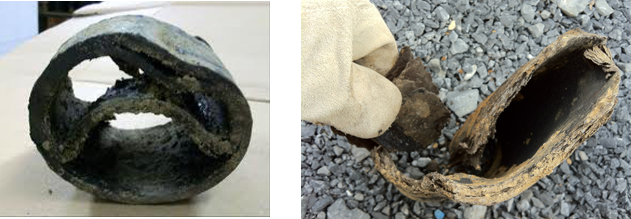
Channeling is a common issue with the Orangeburg type of sewer line. Orangeburg pipe was used in some jurisdictions between about 1945 and 1972. This material is primarily made of tar paper, so the pipe structure has a tendency to buckle as it ages. After about 30 years, decay of the Orangeburg pipe can lead to channeling. Fortunately for those of us in northern California, Orangeburg was not widely used in our region. Orangeburg pipes were more frequently installed in the eastern United States. Post-war development in northern California used mainly cast iron, clay, and later plastic in the 1960s and 1970s.
How to Repair Bellied Sewer Pipes?
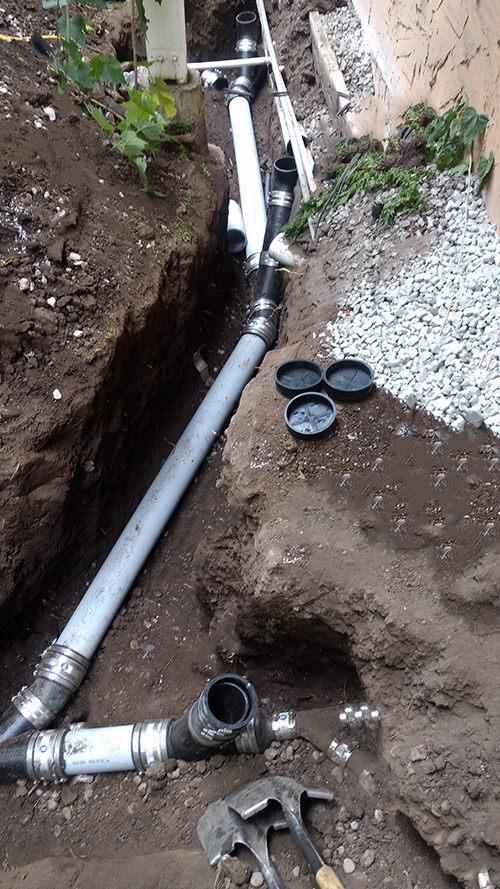
Each case is unique, so there is no general repair technique that applies to any belly in a sewer lateral.
Although we are experts in using the trenchless pipe bursting repair method, we do not always advise trenchless pipe replacement as the best solution for a line belly rehab. Sometimes our team will dig an open trench to access the problem area and then build and fill the ground beneath the sagging sewer line. Once the trench is filled, joints are strengthened and reinforced, remaining space is filled in, and the area is covered with the proper materials and compacted to code.
Under certain circumstances, trenchless Cured-in-Place pipe lining (CIPP) can be a lower cost solution and is an option for some pipe replacement situations – but the CIPP method will not correct bellies in the sewer line. While Pipe Spy does not currently offer this service option, we know that CIPP or “slip lining” can be a challenge in our region, as procurement of the proper permitting for this trenchless method in the San Francisco East Bay is often denied. CIPP is typically only approved in extraordinary cases when there are no other (safer) alternative solutions. Chemicals used to cure CIPP method materials can be toxic and harmful to both the wastewater system and local groundwater. The CIPP technique extends the life of the existing sewer lateral by using the existing pipe for structural integrity. If that integrity is already eroded or compromised, CIPP lining won’t solve the problem. If your sewer repair professional is using this method, be sure to ask questions and check that the proper permits have been issued for the work.
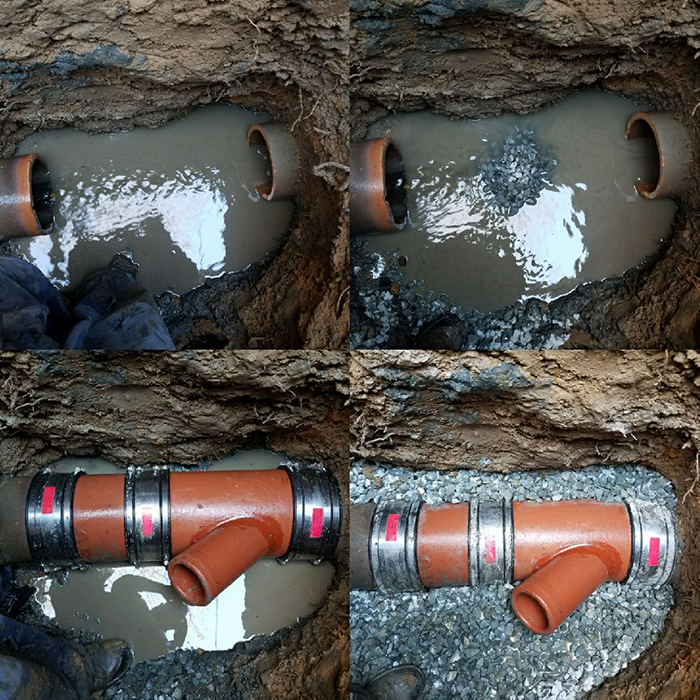
Trust the Experts
If you’re experiencing the symptoms of a sewer belly, or you’ve already confirmed the problem and need to find a plumber you can trust, contact us at Pipe Spy. We are the East Bay’s trusted experts in trenchless sewer line replacement, camera inspections, repair, and maintenance.
Contact our team to discuss your project and request more information.

